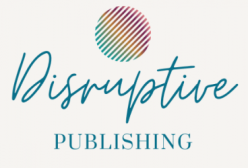Do you want to know the real truth about writing and publishing a book?
Writing and publishing a book takes effort. It can be hard work. There I said it! It’s not the glamorous, inspired, get-in-the-flow-and-glide-through-life lifestyle we all like to think it will be.
Words rarely fall out of people and land perfectly on a page in a way that moves readers like they’ve never been moved before. To have an impact like that takes time and effort, planning and skill.
And there are many things that need to be done to become a successfully published author, many of which are a huge surprise to most first-time authors.
There are a few key principles, however, that can make the process of writing and publishing a book way more satisfying and effort-less than they might be if you aren’t aware of these things. Let me tell you what they are…
The first thing you need to know about writing and publishing a book is that there are actually six stages, of which writing is just one. Knowing this will hopefully alleviate any frustration you might feel when you book isn’t being published five minutes after you finish your first draft.
Those six stages include:
- Writing your book
- Editing your book
- Formattting your book for the various publishing platforms
- Creating your book cover
- Publishing your book to the various platforms and then
- Marketing yourself and you book
Here are some tips to help you get through those 6 stages of writing and publishing your book more successfully:
- Be prepared to put a similar amount of time and effort into each of the stages if you want what you’ve written to be published and read.
- Learning to structure your book and planning your outline is key to having a better writing experience, as well as key to giving your reader a better reading experience.
- It is impossible to be objective about our writing so engaging an editor is vital to producing a good book. The better the edit, the better your book will be received and digested by your reader.
- Formatting and layout can be challenging, and various platforms have different requirements. Do your research, and get help when and where you need to in order to get your book looking right, and to meet the requirements of each of the publishing platforms.
- Choose the publishing platforms that your readers are getting their books from. Print books still outsell ebooks and audiobooks but these are still big markets and should not be overlooked. If you can publish to various platforms that will make your book more accessible to your readers.
- Finally, if you want your book to be read, you need to be prepared to put in a lifetime of marketing. This is an ongoing demand that will never not require you to show up and put yourself and your book in front of anyone and everyone that might be considered your ideal reader.
Please do not rush this journey, or cut corners for the sake of a few weeks or even a few months. Think bigger and allow the process to take the time it needs to take.
Writing and publishing a book is a commitment to create something you can be proud of that will last a lifetime, and if you do it well, it will leave a legacy way beyond your lifetime.
Over the next few weeks I will explore some more truths about writing and publishing a book.
In the meantime, though, if you are serious about writing and publishing your own book, follow the link below and download our free ebook – 7 Things An Author Must Know About Writing And Publishing A Book Before They Take The Plunge.
Did I mention that it’s free?
Or, if you have an idea for a compilation project, tell us about it. We might be able to work together. Email: deb@disruptivepublishing.com.au

